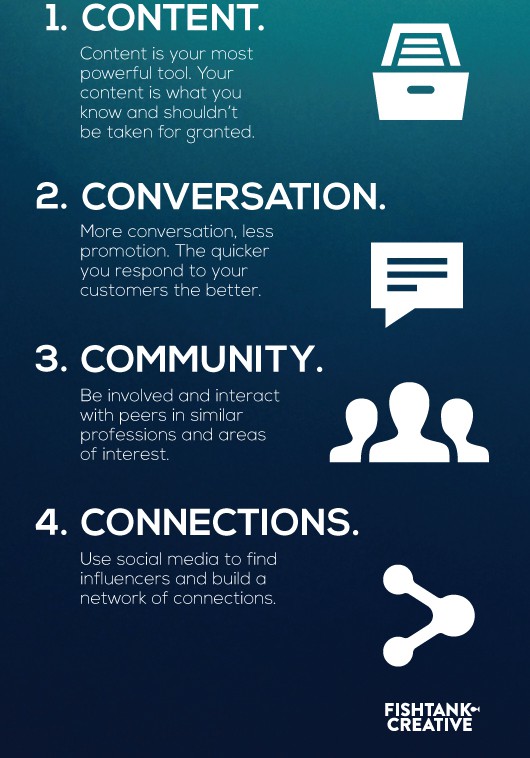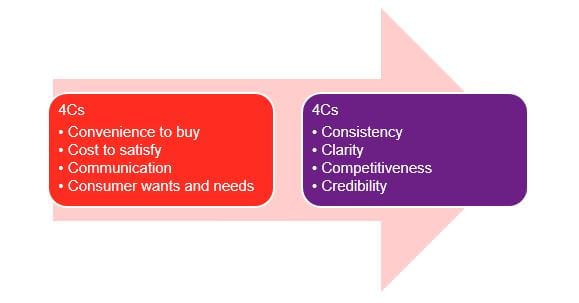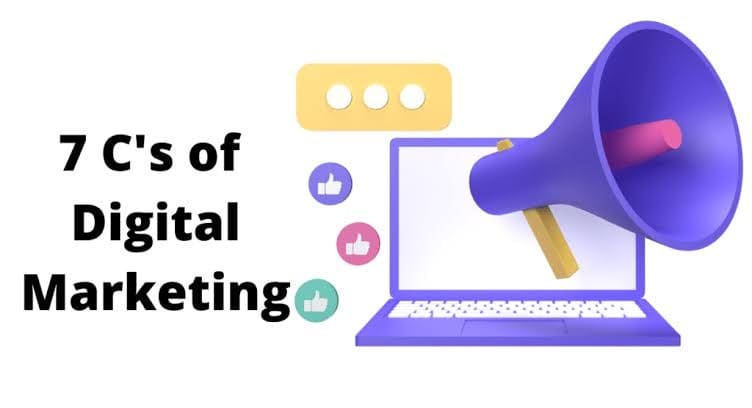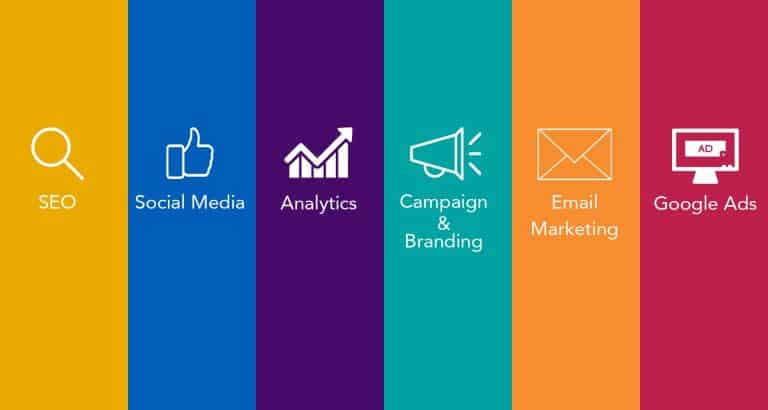Understanding the 4 C’s of Digital Marketing
Are you ready to unlock the secrets of digital marketing? In this article, we will demystify the 4 C’s of digital marketing, revealing the essential elements that can make or break your online presence. Whether you’re a seasoned professional or just starting out in the digital realm, this insightful guide will equip you with the knowledge and tools to navigate the dynamic world of digital marketing. So, grab your cup of coffee, sit back, and get ready to discover the 4 C’s that will transform your digital marketing strategy. Let’s jump right in!
Overview of Digital Marketing
Digital marketing refers to the use of digital channels and strategies to promote products, services, and brands to the online audience. It encompasses various techniques such as search engine optimization (SEO), social media marketing, content marketing, email marketing, and more. In today’s digital age, businesses need to have a strong online presence in order to reach their target customers effectively.
Definition of digital marketing
Digital marketing involves utilizing digital technologies and platforms to create, deliver, and communicate value to customers. It encompasses online advertising, social media marketing, email marketing, content marketing, and other digital channels to attract and engage customers. The goal of digital marketing is to drive customer acquisition, retention, and ultimately, profitability for businesses.
Importance of digital marketing
Digital marketing has become increasingly important in today’s highly connected world. With the majority of people spending their time online, businesses need to meet their customers where they are. Digital marketing offers numerous benefits, including:
- Reach and accessibility: Digital marketing allows businesses to reach a global audience and be accessible 24/7, unlike traditional marketing methods that are limited by geographical boundaries and operating hours.
- Cost-effective: Digital marketing often offers a higher return on investment (ROI) compared to traditional marketing channels. It allows businesses to reach a larger audience at a lower cost, making it a preferred choice for companies with limited budgets.
- Targeted marketing: With digital marketing, businesses can target specific demographics, interests, and behaviors, allowing for more personalized and relevant messaging. This targeted approach increases the chances of conversion and customer engagement.
- Measurable results: Unlike traditional marketing, digital marketing provides detailed data and analytics on campaign performance. This enables businesses to track and measure the effectiveness of their marketing efforts, making it easier to optimize strategies for better outcomes.
By leveraging the power of digital marketing, businesses can build brand awareness, increase customer engagement, drive website traffic, and ultimately, boost sales and revenue.
The 4 C’s of Digital Marketing
To create successful digital marketing strategies, it is essential to understand and apply the four fundamental principles known as the 4 C’s of digital marketing: Customer, Content, Context, and Channel. These principles guide businesses in effectively reaching and engaging their target audience.
Customer
The first C of digital marketing is the customer. It is crucial to understand the needs, preferences, and behaviors of your target customers. By understanding their pain points and desires, you can tailor your marketing messages to meet their specific needs. This customer-centric approach helps businesses build strong relationships and improve customer satisfaction.
Content
Content is king in digital marketing. The second C emphasizes the importance of creating relevant and engaging content that resonates with your target audience. Good content not only attracts visitors but also keeps them engaged and encourages them to take actions. This can be achieved through various types of content, including blog posts, videos, infographics, podcasts, and more.
Context
Context refers to delivering the right message to the right person at the right time and place. Today’s consumers expect personalized experiences, and businesses need to adapt to this expectation. By understanding customer behaviors and preferences, businesses can deliver targeted messages that align with their interests and needs. This personalized approach enhances customer satisfaction and increases the chances of conversion.
Channel
The final C focuses on choosing the right channels to reach and engage your target audience effectively. There are numerous digital marketing channels available, such as search engines, social media platforms, email marketing, mobile apps, and more. It is important to identify the channels where your target audience is most active and tailor your marketing efforts accordingly. Each channel has its own unique characteristics and requirements, so choosing the right ones will maximize the effectiveness of your digital marketing campaigns.
Customer
Understanding customer needs and preferences is at the core of successful digital marketing. By gaining insights into your target customers, you can develop strategies that directly address their pain points and deliver value. Here are some key aspects to consider:
Understanding customer needs and preferences
To understand your customers, you need to conduct thorough market research. This involves analyzing demographic data, conducting surveys or interviews, and studying customer behavior patterns. By understanding what motivates your customers, their goals, and challenges, you can tailor your marketing messages and offers to meet their specific needs.
Creating personalized experiences
In today’s digital landscape, customers expect personalized experiences. By utilizing customer data and insights, you can create personalized marketing messages, offers, and recommendations that resonate with your target audience. This personal touch helps foster strong relationships with customers, enhance brand loyalty, and drive repeat business.
Personalization can be achieved through techniques such as dynamic content, email segmentation, and tailored landing pages. By delivering relevant and targeted messages to each customer, you can increase engagement and conversions.
Content
The quality and relevance of your content play a vital role in attracting and engaging your target audience. To optimize your content marketing efforts, consider the following:
Creating relevant and engaging content
Relevance is key when it comes to content creation. It is essential to understand your target audience’s interests, pain points, and aspirations. By creating content that addresses their needs, you can position yourself as a valuable resource and build trust with your audience.
Good content should also be engaging and memorable. Incorporate storytelling, visuals, and interactive elements to capture and retain your audience’s attention. By delivering informative and compelling content, you can increase brand awareness, generate leads, and drive conversions.
Utilizing different types of content
Don’t limit yourself to just one type of content. Different audiences consume information in different ways. Consider using a mix of blog posts, videos, infographics, podcasts, and social media posts to cater to varied preferences.
Experiment with different formats to see what resonates best with your target audience. For example, if your audience prefers visual content, focus on creating videos or infographics. By diversifying your content, you can reach more people and increase engagement.
Optimizing content for search engines
Search engine optimization (SEO) plays a crucial role in ensuring your content gets discovered by the right audience. By optimizing your content for relevant keywords, improving website speed and usability, and acquiring high-quality backlinks, you can increase your website’s visibility in search engine results.
Keyword research is essential for determining the terms and phrases your target audience is searching for. By incorporating these keywords into your content, meta tags, and headers, you can improve your chances of ranking higher in search engine results and attracting organic traffic.

Context
Reaching your target audience in the right context is essential for effective digital marketing. Consider the following factors when delivering your marketing messages:
Connecting with customers in the right context
Context refers to the specific circumstances and environment in which your marketing messages are received. Timing plays a crucial role in delivering your messages effectively. Understanding when and where your target audience is most receptive to your marketing efforts allows you to maximize the impact of your campaigns.
For example, if your target audience is more active on social media during specific hours of the day, schedule your social media posts to coincide with their online presence. This ensures that your messages are seen and engaged with by the right people at the right time.
Understanding customer behaviors and preferences
To effectively deliver in the right context, it is crucial to understand your target audience’s behaviors and preferences. Analyze data and gather insights on how your customers interact with your brand across different platforms and touchpoints. This information helps you identify patterns and trends, allowing you to anticipate customer needs and tailor your marketing efforts accordingly.
Understanding your customers’ buying journey and decision-making process also enables you to provide the right content and offers at each stage. By aligning your messaging with their preferences, you can increase engagement and conversions.
Channel
Choosing the right marketing channels is instrumental in reaching and engaging your target audience effectively. Consider the following factors when determining the channels to focus on:
Choosing the right channels for marketing
Not all marketing channels are created equal. It is important to identify the channels that are most relevant to your target audience and align with your business goals. Consider factors such as audience demographics, platform popularity, and the nature of your products or services.
For example, if your target audience consists of young professionals, platforms like Instagram or LinkedIn might be more effective in reaching them. However, if your products or services are more visual in nature, platforms like YouTube or Pinterest might be a better fit.
Utilizing social media platforms
Social media has become an integral part of digital marketing. It offers a direct and interactive way to engage with your target audience. Consider creating and maintaining a presence on platforms like Facebook, Instagram, Twitter, LinkedIn, or TikTok, depending on your audience’s preferences.
Ensure that your social media strategy aligns with your overall marketing objectives. Provide valuable content, engage with your audience, and leverage social media tools like analytics and paid advertising to maximize your reach and impact.
Implementing email marketing strategies
Email marketing remains one of the most effective channels for driving conversions and building customer relationships. By building an email list of interested prospects and existing customers, you can nurture leads, promote your products or services, and drive repeat business.
Segmentation is key to effective email marketing. Categorize your audience based on factors like demographics, buying behavior, or engagement level. This allows you to tailor your messages to specific segments, increasing the relevance and effectiveness of your email campaigns.

Benefits of the 4 C’s
Understanding and implementing the 4 C’s of digital marketing can have several advantages for your business. Let’s explore some key benefits:
Building strong customer relationships
By understanding your customers, creating personalized experiences, and delivering relevant content, you can build strong relationships with your target audience. This leads to increased customer loyalty, repeat business, and positive word-of-mouth recommendations.
Driving targeted traffic to your website
By utilizing the right channels, delivering the right message in the right context, and optimizing your content for search engines, you can drive targeted traffic to your website. This brings qualified leads that are more likely to convert into customers.
Increase brand visibility and awareness
Effective implementation of the 4 C’s can significantly increase your brand’s visibility and awareness. By consistently delivering relevant and engaging content across the right channels, you can position your brand as an authority in your industry, improving brand recall and recognition.
Examples of Successful Implementation
Many companies have successfully implemented the 4 C’s of digital marketing. Let’s explore a few case studies to understand how they achieved success:
Company A: Personalized Email Marketing
Company A recognized the importance of personalization in their email marketing campaigns. They segmented their audience based on purchasing behavior, interests, and engagement levels. By tailoring their email content and offers based on these segments, they achieved higher open rates, click-through rates, and conversions. This personalized approach helped them build strong customer relationships and increase customer lifetime value.
Company B: Relevant Social Media Content
Understanding their target audience’s preferences, Company B focused on creating relevant and engaging social media content. They conducted regular market research and analyzed social media analytics to identify trending topics and interests. By consistently delivering content that resonated with their audience, they gained a large and dedicated following, leading to increased brand visibility and engagement.
Company C: Contextual Advertising
Company C identified the importance of delivering their advertising messages in the right context. They conducted research to understand when and where their target audience was most receptive to their ads. By strategically placing their ads during events and seasons relevant to their target audience, they achieved higher click-through rates and conversions. This contextual approach significantly increased their return on ad spend and overall campaign success.
These examples highlight the effectiveness of the 4 C’s in achieving marketing success. By understanding your customers, creating relevant content, delivering in the right context, and choosing the right channels, you can enhance your digital marketing strategies and drive better results.

Challenges and Considerations
While the 4 C’s provide a solid foundation for successful digital marketing, there are some challenges and considerations to keep in mind:
Adapting to evolving customer needs and preferences
Customer needs and preferences are constantly evolving. To stay relevant, businesses need to continuously adapt their strategies and offerings. Regular market research, customer feedback, and monitoring industry trends are essential to understanding and meeting changing customer expectations.
Keeping up with technological advancements
Technology plays a crucial role in digital marketing. New tools, platforms, and algorithms are constantly emerging, requiring businesses to stay updated and adapt their strategies accordingly. Keeping abreast of technological advancements and investing in the right tools and resources is vital for staying competitive in the digital landscape.
Effective data analysis and measurement
Digital marketing produces vast amounts of data that can be overwhelming to analyze. It’s essential to have a robust analytics and measurement system in place to track the performance of your marketing efforts. Analyzing data allows you to identify areas of improvement and optimize your strategies for better results. Consider investing in data analytics tools and hiring professionals who can interpret and leverage data effectively.
Conclusion
In today’s digital era, understanding the 4 C’s of digital marketing is essential for businesses looking to thrive online. By putting customers at the center of your strategies, creating relevant and engaging content, delivering in the right context, and leveraging the right marketing channels, you can enhance your marketing campaigns and drive better results.
Remember, digital marketing is not a one-time effort. It requires continuous monitoring, adaptation, and innovation. Stay informed about the latest trends, technologies, and customer expectations to stay ahead of the competition. With the right approach, the 4 C’s can contribute significantly to the success of your digital marketing efforts.







